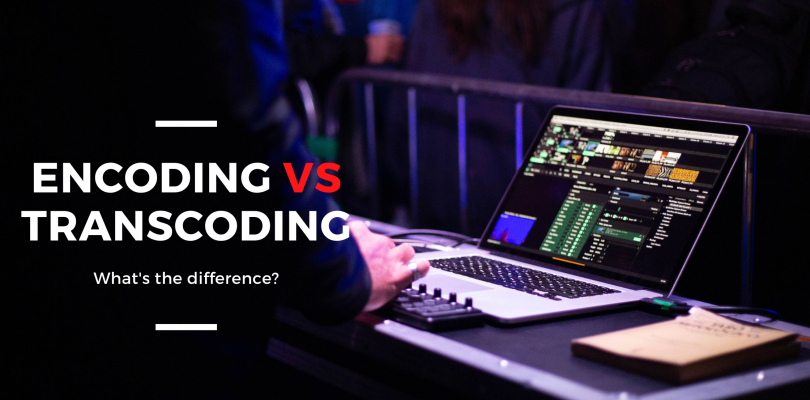When you’re working on the video streaming process, you must have come across terms like “encoding” and “transcoding” processes. Usually, people get confused and consider these terms as synonyms, but that’s not true.
Both the terms have their independent and dependent functions in the video processing technology, and you must understand the clear distinction between them. The video files cannot be uploaded for streaming in their raw formats and sizes, you need to compress and process the video files into suitable formats and sizes for a smooth video streaming experience.
In other words, the difference between encoding and transcoding is, the former uses an uncompressed source file, and the latter processes an already compressed file.
Basically, the video encoding process helps in compressing the raw video files into smaller compatible sizes for smooth transmission of files on different devices, whereas the transcoding process works on the already-compressed video source to alter them to more transmittable formats. They both act like one process following the other, depending upon the viewers’ requirements.
Let’s understand the main difference between both of them by considering their independent roles in the video streaming process. You can also read in depth about encoding vs. transcoding.
The Role Of Encoding In Video Processing
You cannot stream a video without encoding the same into a deliverable format and size. The encoders convert the raw large sized video files into a compressed format to make it possible for transmitting across the internet, without affecting the quality of the video.
The encoder (hardware or software) uses the compression technology through codecs like H.264 and H.265, which codes and decodes the video file by discarding unwanted cached, or visual and audio data which won’t affect the video’s quality while streaming. After reaching the user’s device, the video is then decompressed by the device for playback.
Since, you cannot upload the raw video file on the streaming platform directly, it is inevitable to encode your video into smaller files. Therefore, the encoding process can never be missed and is necessary in every video streaming process.
But, the encoding process may affect the video quality if not done properly. Encoding in itself is a complex process, involving different settings of factors like bitrate, frames per second, resolution, etc., which work together to maintain the video quality and keep the size smaller as possible. Moreover, there are two types of encoding:
Lossy Compression: It reduces the file size by removing unnecessary cached data.
Lossless Compression: It compacts the flies without removing any data, in the form of ZIP files, which maintains the data integrity.
Usually, the encoding process is a lossy one, but it depends on what type of content you’re compressing, like live-stream footage or an animated video, etc. You need to tweak the bitrate size and resolution quality of the video to get the non-grainy video quality with compatible size.
The Role Of Transcoding In Video Processing
Though encoding is a necessary step of video processing technology, video transcoding is an exclusive process for particular purposes.
The transcoding process takes up the already-encoded video file and decodes/decompresses it, implements alterations, and recompresses it prior to last-mile video delivery. It may involve small changes like adding watermarks and graphics, or large ones such as codecs conversion. For this, you need to apply protocols like RTMP, SRT, RTSP, etc. to the transcoder (media server, or a cloud-based streaming platform), which make the files compatible with the different protocols like Apple HLS, HDS, MPEG-DASH, etc. as per the audience’s devices.
For example, live footage from a surveillance camera on a private network, like a bank, won’t require the transcoding process because only the security personnel will need those. Their devices and screens are connected to the external devices or are on-site in the bank’s network area.
Alternatively, if you’re delivering your video content to a broader audience through the RTMP protocol, you must be certain that every viewer streaming the video uses a compatible device or media player.
Or, if you’re live streaming a football event, which can be viewed by physically challenged, as well as the busy corporate football fans, the video needs transcoding to get seamless streaming on both an old computer with poor internet connectivity, and on an Apple TV with a high-speed internet connection.
Final Thoughts
Compressing your video file for seamless video streaming is the goal of every video broadcaster and publisher. To do so, you must understand the technology and the differences between them, just like encoding and transcoding. The encoding process is always necessary as it compresses the file size into transmittable format, whereas transcoding is an optional process, which helps in further processing of the compressed files.


